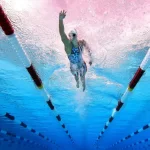There was a time when sports watches could only offer time and heart rate, and offered little additional value. But with the explosion of GPS-enabled devices, modern triathlon watches are quite advanced and can help any athlete train with more accuracy.
The watchmakers have turned the simple watches into complex fitness tracking tools that you can wear right on your wrist. The problem is, the market is saturated. Which ones are best? How do you know without getting caught up in all the technology? How much money do you need to spend? Here are some of our recommendations:
This most popular Triathlon watch of 2016 is still top of the list for 2017. It’s smartphone compatibility and connectivity (including emails and texts), Garmin Connect Mobile App, swim metrics, pace and stroke count, all-day activity tracking, stride length, and total steps per minute puts it in the popularity bucket. It’s got a stopwatch, heart monitor, distance calculator and stroke count. However, it’s extra features may be unnecessary; and the price tag a bit high at $450.
The best part of this watch is its heart rate monitory which is the most accurate we’ve seen. Its simple design is attractive; coupled with its detailed activity tracking makes this Tom Tom a watch not to pass up – especially at the $250 price tag. Although not smartphone compatible, it is Bluetooth enabled. It has a very large display and its tech features five training zones.
This digital watch that will give you 30 lap memory recall, 99 lap memory count, 100-hour chronograph, and a 24-hour countdown timer. One of its best features is that you can remove gear and features that you don’t want to use. But this classic phone doesn’t have smartphone connectivity or Bluetooth and retails for a mere $55.
The large display on this watch monitors everything from your run cadence, heart rate, distance and speed, and has Bluetooth. It also has a smart coaching platform which will give you strong analytics about your training load and how it affects your performance and recovery. Also, your smart coaching can accurately track your profile and determine how your running performance has evolved over time. It also has a a barometer, accelerometer, 13 hours of battery life, a resistant gorilla glass window, and USB connectivity and compatibility with MAC and Windows. Although with a $500 price tag, you may wonder why there is no smartphone connectivity.
The Magellan Switch Up can track your run cadence, distance, speed, elevation, and water resistance. It has the Activity Pacer, which is its own take on Garmin’s enabled tracker the Virtual Partner. The Switch comes with an extra battery, doubling your battery life to 16 hours of performance and retails for $250.
Retailing at only $60, the Moov pairs with Bluetooth and smartphone, is water resistance, has up to 6 months of battery life, smart coaching that analyzes your workout in real time, and cadence and run tracking. You can personalize your profile in order to tweak your swim, run, or bike performance.
This Garmin gives an added boost to its swimming component. Lots have stayed the same, such as the metrics tracking, heart rate monitor and activity progress; but the design is much slimmer and deeper water depth. However, this 935 has no touchscreen, it’s all old school buttons which doesn’t make the watch look that modern for the hefty $500 to $650 price tag.
Don’t get fooled into buying the fancy Triathlon watch with all the fancy features if you can’t make them work for you. Pick a watch that’s going to work for you and help you with your training. Still feeling overwhelmed with which watch to buy and what all the features mean? Contact me and I can help you decipher the meanings.






